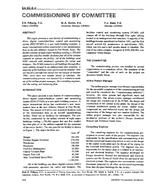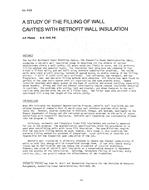Click here to purchase
Façade technology has been undergoing continuous evolution with various systems suited for enhancing energy performance and occupancy comfort in new and retrofit buildings. In cold climates, Double Skin Façades (DSF) can provide a solution to low ambient temperatures and a potential for façade-integrated energy production, thus responding with a great extent to such measures. This study presents a new workflow to optimize DSF through balancing the façade’s geometric form with relevant thermal loads, daylighting availability, and energy efficiency potentials in buildings. Brute-force parametric simulation was applied with a combination of visual scripting and sensitivity analysis to understand the behavior of the outer and inner skin layers of DSF in cold climates. Thermal transmittance was calculated and modeled for radiative and conductive heat flow. The optimization was performed for five geometric parameters: Tilt angle within the façade (τ), Window to Wall Ratio (WWR), Vision-Spandrel Ratio (VSR), Floor Height (h), and Cavity Depth (d). Results indicate that, among the effect of a multitude of variables, a DSF system with an integrated renewable energy source can achieve nearly 38.7% to 45.2% energy improvement. In terms of daylighting availability and visual comfort, a τ of 50o
was the most adequate in balancing Annual Daylight Exposure (ASE) and Spatial Daylight Autonomy (sDA) ranges with an h of 3 m to 3.5 m. Higher values of h yielded moderate energy improvement with best visual comfort conditions. If d is held constant at 1.2 m, energy performance was found to be optimum with reduced floor heights.
Citation: ASHRAE/IBPSA-USA Bldg Simulation Conf, Sept 2020
Product Details
- Published:
- 2020
- Number of Pages:
- 8
- Units of Measure:
- Dual
- File Size:
- 1 file , 5.1 MB
- Product Code(s):
- D-BSC20-C044


